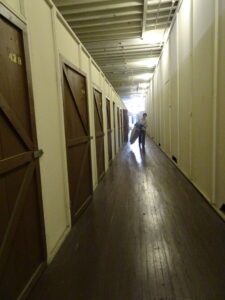Process
General description of the A.W. Moore papers
Alan Willard Moore (born 1951) is a writer and editor who also worked as an artist, organizer and professor of art history. His collection of papers consists of writings, clippings, ephemera, books and magazines. Works of art are described and listed separately.
Moore studied art history and journalism in California, from 1969-1974. He moved to New York City in 1974 as an intern for Artforum magazine, and also worked with Art-Rite. He joined the artists’ group Colab (Collaborative Projects) in 1977, and worked with them continuously as an organizer and video artist. (Although the group formally ended in 1989, members continue to be active informally.) He ran the MWF Video Club distribution project for artists’ work on video from 1986 to 2002. Papers relating to the MWF project have been deposited (Spring, 2019) in the Film and Theater Collection at the University of Wisconsin, Madison.
Moore was a co-founder of the cultural center ABC No Rio in 1980, and a writer and art editor at the East Village Eye news magazine. In 1991 he returned to school for a PhD in art history (City University of New York, 2000). His dissertation research was on artists’ collectives, published in 2011 as Art Gangs: Protest and Counterculture in New York City. In 2009 he embarked on a research project to explore squatting in Europe, publishing House Magic, an annual review on the culture of political squatting. He relocated to Madrid, Spain. In 2015 he wrote Occupation Culture: Art and Squatting in the City from Below, and edited Cultural Production in Occupied Spaces.
Moore’s papers are most numerous in the 1980s, ’90s, ’00s and ’10s. In addition to records of his and his artist comrades’ principle activities, the papers include an extensive collection of small publications, and ephemera around art, politics and academia. The MWF Video Club papers form a separate series, as does ABC No Rio, the Colab group, Lower East Side artists, and the House Magic research project on European squatting.
Moore’s library consists of books directly relevant to his research projects and his art collection. (This is aside from the many catalogues, gallery handouts, journals and ‘zines.) Most of the books are produced by independent presses. All materials are currently in storage in Milwaukee.
At a guess, there are in toto 200-odd boxes, partially listed and culled. Box descriptions available upon request.

